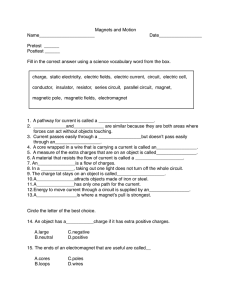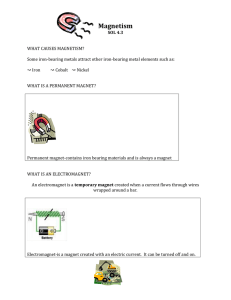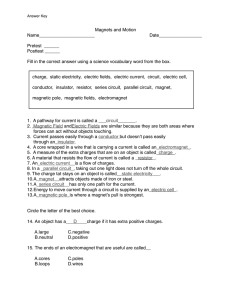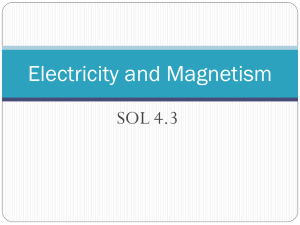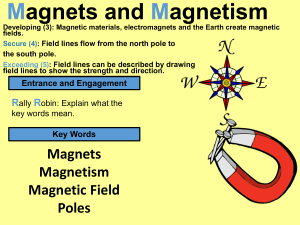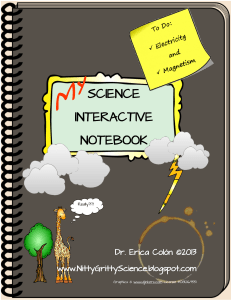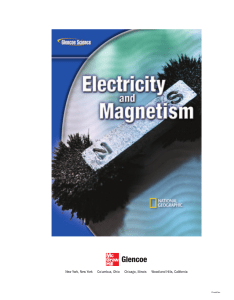Electricity and Magnetism Review Sheet
advertisement
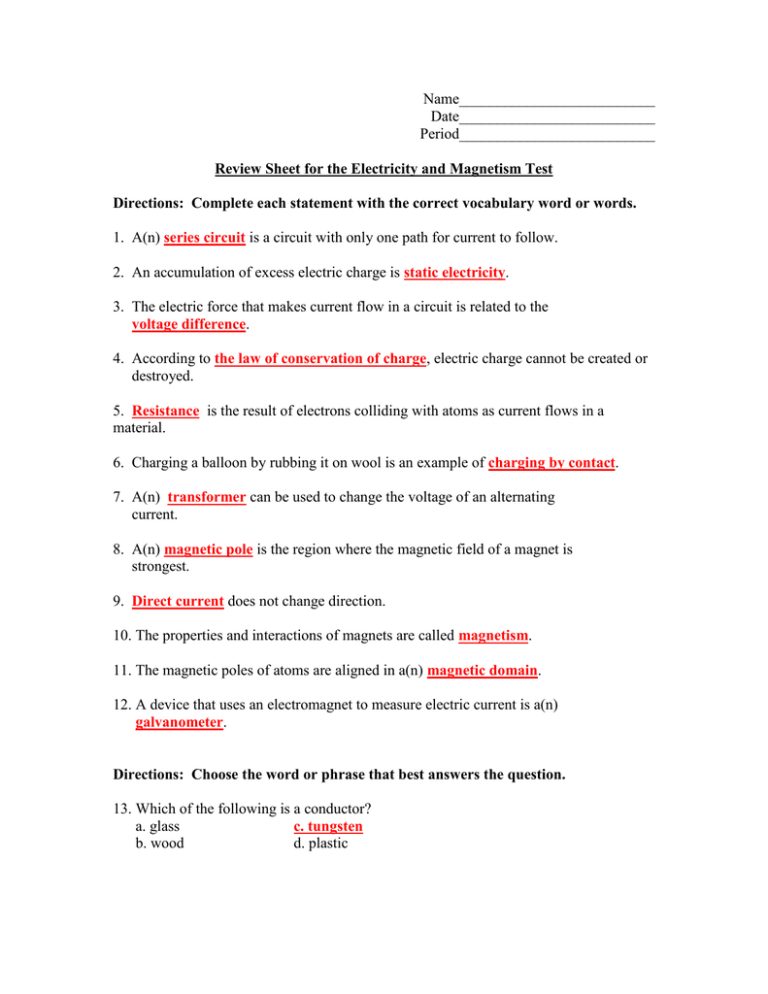
Name__________________________ Date__________________________ Period__________________________ Review Sheet for the Electricity and Magnetism Test Directions: Complete each statement with the correct vocabulary word or words. 1. A(n) series circuit is a circuit with only one path for current to follow. 2. An accumulation of excess electric charge is static electricity. 3. The electric force that makes current flow in a circuit is related to the voltage difference. 4. According to the law of conservation of charge, electric charge cannot be created or destroyed. 5. Resistance is the result of electrons colliding with atoms as current flows in a material. 6. Charging a balloon by rubbing it on wool is an example of charging by contact. 7. A(n) transformer can be used to change the voltage of an alternating current. 8. A(n) magnetic pole is the region where the magnetic field of a magnet is strongest. 9. Direct current does not change direction. 10. The properties and interactions of magnets are called magnetism. 11. The magnetic poles of atoms are aligned in a(n) magnetic domain. 12. A device that uses an electromagnet to measure electric current is a(n) galvanometer. Directions: Choose the word or phrase that best answers the question. 13. Which of the following is a conductor? a. glass c. tungsten b. wood d. plastic 14. Resistance in wires causes electrical energy to be converted into which form of energy? a. chemical energy c. thermal energy b. nuclear energy d. plastic 15. The electric force between two charged objects depends on which of the following? a. their masses and their separation b. their speeds c. their charge and their separation d. their masses and their charge 16. An object becomes positively charged when which of the following occurs? a. loses electrons c. gains electrons b. loses protons d. gains neutrons 17. A commonly used unit for electrical energy is which of the following? a. kilowatt-hour c. ohm b. ampere d. Newton 18. Which of the following is the rate at which appliances use electrical energy? a. power c. resistance b. current d. speed 19. Where is the magnetic force exerted by a magnet the strongest? a. both poles c. north poles b. south poles d. center 20. Which change occurs in an electric motor? a. electrical energy to mechanical energy b. thermal energy to wind energy c. mechanical energy to electrical energy d. wind energy to electrical energy 21. What happens to the magnetic force as the distance between two magnetic poles decreases? a. remains constant c. increases b. decreases d. decreases then increases 22. Which of the following would NOT change the strength of an electromagnet? a. increasing the amount of current b. changing the current’s direction c. inserting an iron core inside the coil d. increasing the number of loops 23. Which of the following would NOT be part of a generator? a. turbine c. electromagnet b. battery d. permanent magnet 24. Which of the following describes the direction of the electric current in AC? a. is constant c. changes regularly b. is direct d. changes irregularly Directions: Label each type of circuit below and describe the difference between them. The top diagram is a series circuit because it has one pathway for current. The second diagram is a parallel circuit because it has two or more pathways for current.
